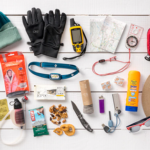When one looks at the evolution of push scooters, it’s only too easy to see their appeal. Quiet, unassuming, and as easy on the eyes as they are to get around on, they’ve grown from being strictly children’s playthings into a solid bit of the hip commuter’s kit that’s just plain enjoyable.

And they’re not just for basic “getting around” either. Ranging from simple “two wheels with a deck” setups, to pro and custom models meant for freestyle and competitive trick riders, scooters aren’t just for kids anymore.
For all their simplicity and uniqueness, though, scooters still have one basic and very utilitarian component in common with every other form of “far less hip” conveyance – they have wheels.
Fortunately, these don’t take the backseat to any other design because the vast array of scooters wheel offers plenty of style and function. Available with some of the hottest colour schemes and vivid graphics imaginable, as well as sturdy materials, you’re truly spoiled for choice. However, it’s helpful to understand a little bit about them before investing in a new pair.
Though They All Go Round and Round, They’re Not the Same
If you’re new to the market, the most important thing to keep in mind is that they’re not all the same; and choosing the ideal design depends just as much on how a person uses their scooter as it does on their experience level.
Made from differing hardnesses of urethane, functional scooters wheel diameters generally vary between 100mm and 120mm. It may not seem like much, but those few millimetres make a huge difference in performance and handling, and you should also bear in mind that not every scooter frame can accept just any size of wheel. Larger ones may not clear the fork or brake on some stock scooter setups, so a little planning can go a long way.
When it comes to popular diameters, the 110mm wheels are among the most desired options, and are accepted as giving the best overall balance for most riders. Experienced riders, however, who’re perfectly at ease zipping around on quicker scooters prefer softer, larger diameter wheels with better grip, while stunt and freestyle riders prefer harder, easier-handling smaller diameter wheels.
There’s also no shortage of intermediate and specialty-use custom wheels for scooters too, so when contemplating which model to buy, let the use of this means of transport and fun be the decisive aspect.
At the Core… Literally
Since wheels are permanently mounted on cores, these are bits that themselves require some consideration. Here are a few points you should have in mind before making a decision.
Cores are manufactured from both plastic and metal, and come in either solid, spoked, hollow or honey core construction. It’s always wise to judge each of these factors, along with the core’s material strength and weight, from the perspective of how the scooter’s going to be ridden. And of course, whether or not they’re suited for your choice of scooters wheel.
A hollow plastic core made from nylon, for example, would certainly make an excellent choice for standard or mildly customised scooters, but it wouldn’t offer the same strength and durability that a solid aluminium counterpart would for a trick scooter. The aluminium cores are stronger and last longer. Period. The only con is that they’re more expensive.
It shouldn’t come as any surprise, though, that what you get with that finely crafted piece of aluminium is a core that’s designed to take all the shocks and bumps of some seriously hard riding. You won’t be disappointed by the looks either!
In short, the choice of cores is just as crucial as the essential scooter wheel itself. Respective of this, it’s necessary to make sure they’re going to satisfy the fullest extent of the type of riding that’ll be done.
Mind Your Bearings
When coming across all the options of wheels online, it’s impossible not to be blown away by all the colours and the visuals that go with them, but there are still two final components that are no less significant than the others – and they’re all but invisible. The wheel bearings and spacers.
Every wheel has two bearings pressed into its core, and their only job is to ensure the wheels are spinning freely and evenly on the scooter’s axles. Spacers are positioned between the bearings, and once a wheel is installed, prevent the kind of axle over-tightening that would quickly damage them.
They’re manufactured to a wide range of tolerance and precision levels, plus material standards to match an equally wide range of riding styles as are the versatile options of wheels for scooter, but don’t be fooled by their relative obscurity.
A set of bad bearings, or bearings that aren’t suited for a particular riding style, will affect every aspect of how that scooter rides and feels. Same way an incorrectly installed or unevenly worn bearing on an aluminium core easily ruins the entire wheel.
On that note, though not that visible, these bits demand both your respect and attention. Routinely, they need to be kept as free from dirt and water as possible, and periodically inspected and replaced if necessary. Just that little bit of preventative maintenance will double the enjoyment of every ride.
Trick Scooter Wheels
At the end of the day, however, dialling in a good-looking set of custom wheels is as much about how they look as how they ride.
More prominently than any other feature, nothing screams “tricked out” louder than the look, and if you don’t have it, you’d better hurry up and get it. From matching neon-coloured wheel and grip combinations, to the coolest, aluminium-cored design creations from the imaginations of park riding legends; a scooters wheel makes a proper statement about the rider, their love for riding and their commitment to the culture.
With Christmas just around the corner, it’s the perfect time to help yourself, or someone else, get tricked out. You’ll be glad you did.


